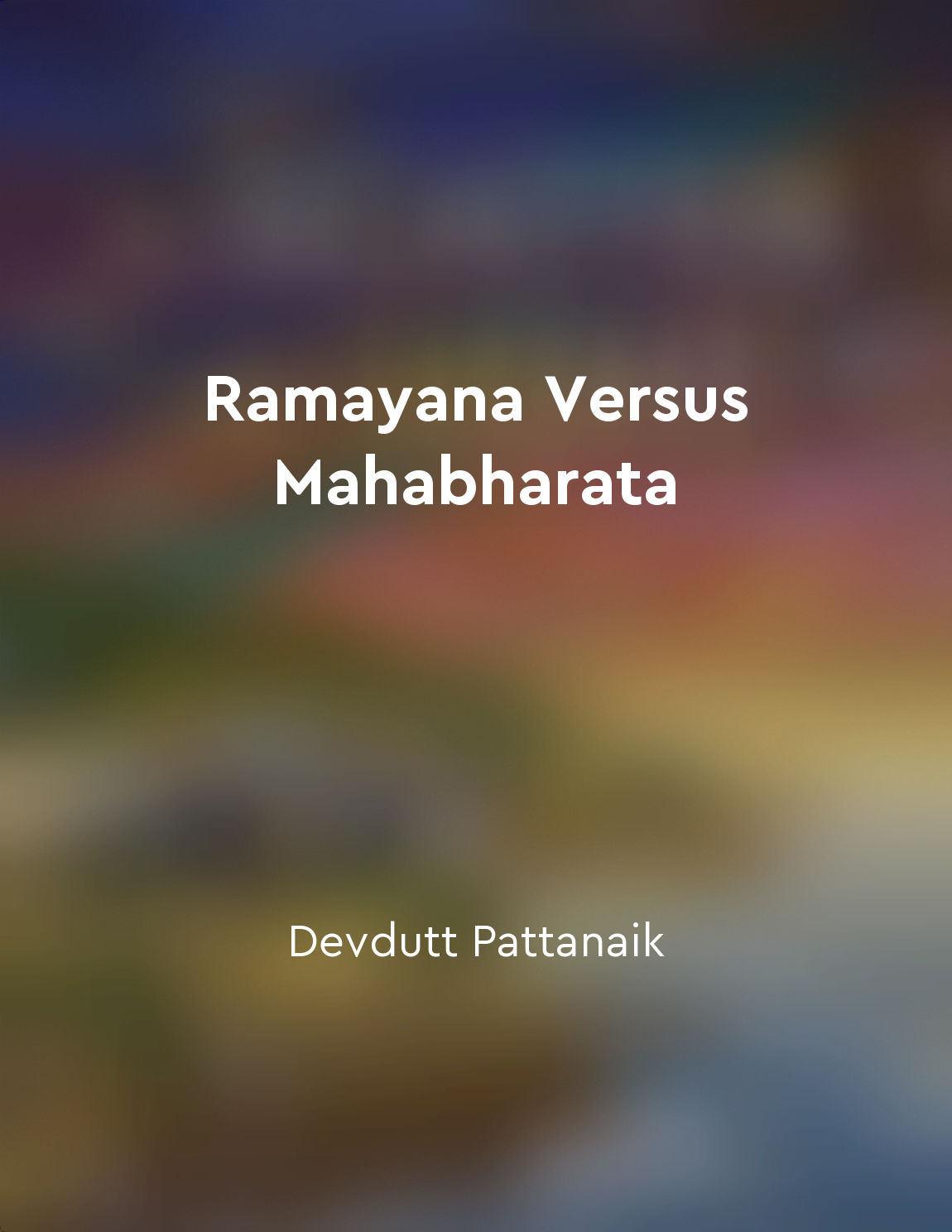Ramayana's Kumbhakarna is giant, Mahabharata's Jarasandha is powerful from "summary" of Ramayana Versus Mahabharata by Devdutt Pattanaik
In the world of Hindu mythology, the Ramayana and the Mahabharata are two of the most popular and enduring epics. Each epic is filled with a rich tapestry of characters, each with their own unique qualities and attributes that add depth and complexity to the narratives. One such character from the Ramayana is Kumbhakarna, the giant brother of the demon king Ravana. Kumbhakarna is known for his immense size and strength, which make him a formidable opponent on the battlefield. His physical prowess is unmatched, and he is often portrayed as a fearsome and powerful figure who strikes fear into the hearts of his enemies. On the other hand, the Mahabharata features Jarasandha, a powerful and mighty king who rules over the kingdom of Magadha. Jarasandha is not defined by his physical stature like Kumbhakarna, but rather by his strategic acumen and political influence. He is a master tactician and a skilled warrior, able to outsmart his opponents and emerge victorious in battle. While Kumbhakarna's strength lies in his sheer size and brute force, Jarasandha's power comes from his intelligence and cunning. Both characters are formidable in their own right, but they represent different aspects of power and strength. Kumbhakarna relies on his physical might to overpower his enemies, while Jarasandha uses his intellect and strategy to outwit his foes. In comparing these two characters, we see how the Ramayana and the Mahabharata explore different facets of power and strength. Kumbhakarna embodies the idea of physical dominance, while Jarasandha symbolizes the power of intellect and cunning. Together, they showcase the diverse ways in which power can manifest itself in the world of Hindu mythology.Similar Posts
Discuss the importance of human rights in a just society
Human rights are a crucial element in the establishment of a just society. They serve as the foundation upon which the principl...

Ramayana is idealistic, Mahabharata is realistic
In the Ramayana, characters are portrayed as either good or evil, with little room for ambiguity. The ideals of dharma and righ...
Virtue
In the ancient Indian epic Ramayan, the concept of virtue is portrayed as a fundamental aspect of human behavior and character....

Ramayana's Lanka is demon city, Mahabharata's Indraprastha is royal city
In the Ramayana, Lanka is depicted as a city ruled by demons, led by the demon king Ravana. It is described as a place filled w...
Embracing adversity can lead to growth, resilience, and ultimately triumph
In life, we often encounter challenges and obstacles that may seem insurmountable at first glance. However, it is essential to ...
Globalization has both positive and negative impacts on modern India
Globalization has brought about significant changes in modern India, impacting the country in both positive and negative ways. ...
Rama's victory over evil
The epic tale of Ramayana revolves around the triumph of good over evil. Rama, the virtuous prince, is the central figure in th...
